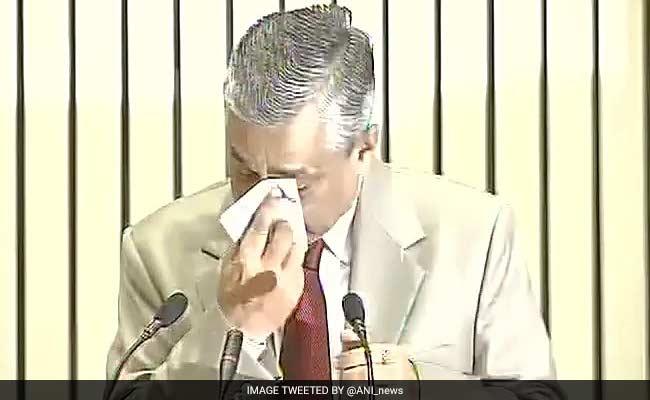Chief Justice of India broke down. Whats going on?
Four months ago, while addressing the annual conference of Chief Ministers and Chief Justices of the High Courts, the Chief Justice of India pulled out his handkerchief to wipe the tears in his eyes in

The above statistics paint a grim picture of the judicial system in our country, and if justice delayed is justice denied, then clearly there is no justice in India. For a civilized country and a functioning democracy nothing could be more shameful.
A silver lining in the gathering dark clouds of the pending cases is that the courts have generally been able to dispose of as many cases as are filed in a given year, if not more. But this is not enough. We need to do more. The following steps are worth our consideration:
1) An immediate drive should be undertaken to release all those under trial prisoners who have already served a jail term in excess of the punishment warranted by the sections of law under which they have been charged or are likely to be charged. Can the Supreme Court issue a direction to all state governments to complete this task in a period of three months? This will automatically eliminate a large number of cases and also reduce the overcrowding in our jails.
2) The judiciary and the government should jointly set up a committee to tackle the menace of the remaining pending cases. State governments should be invited to participate in the deliberations of this committee when needed. The matter should not be left to be tackled by the state governments alone.
3) Once again, clear yardsticks of performance of judges and disposal of cases by them should be laid down at every level.
4) According to the government of India, there were 4,432 posts of judges lying vacant in the subordinate judiciary as on December 31 last year. Needless to say, they should be filled up without loss of time.
5) Adjournments should be banned except in exceptional cases. The courts often succumb to the pressure of interested parties to grant adjournments even on flimsy grounds. This practice may suit the courts and the lawyers but is extremely unfair to the litigants. Each adjournment, if given, should be on the basis of speaking orders, recording in detail the reasons for the adjournment.
Once the standards and a strict code of conduct for the judges is laid down, an assessment should be made about the number of pending cases which can be disposed of by our 20,000-strong judiciary along with the current cases. A decision should be taken jointly thereafter by the government and the judiciary about the disposal of the pending cases within a fixed period of time. Depending on the time, fixed a calculation should be made of the number of judges required for this purpose. This number could then be arranged in three ways:
1. Increase in the number of judges on a permanent basis and provision of infrastructural facilities for them.
2. The extension in the retirement age of the present judges who are willing to serve for an extra number of years
3. Temporary reemployment of retired judges for a fixed number of years only to dispose of the pending cases.
A special study should be made of the reasons for the pendency of a large number of cases in the five states mentioned above and some special steps if necessary should be taken to clear the backlog in these states and to ensure that the backlog does not accumulate again. The judiciary in general and the higher judiciary in particular must eschew the tendency to take up high-profile cases which bring it publicity sooner than the other cases. Most of our litigants are poor and illiterate. They cannot even afford an ordinary lawyer, much less a high-profile one. They should not suffer on account of their ignorance and poverty. I am purposely not mentioning the high-profile cases where high-profile lawyers are able to manage a hearing in no time and the courts succumb to the desire for publicity.
The tears shed by the Chief Justice of India would have served their purpose if concerted and coordinated steps are taken by the Prime Minister and him personally to rid our democracy of the injustice which has become embedded in our justice system.
Read more at: http://www.ndtv.com/opinion/chief-justice-of-india-broke-down-whats-going-wrong-1438676

